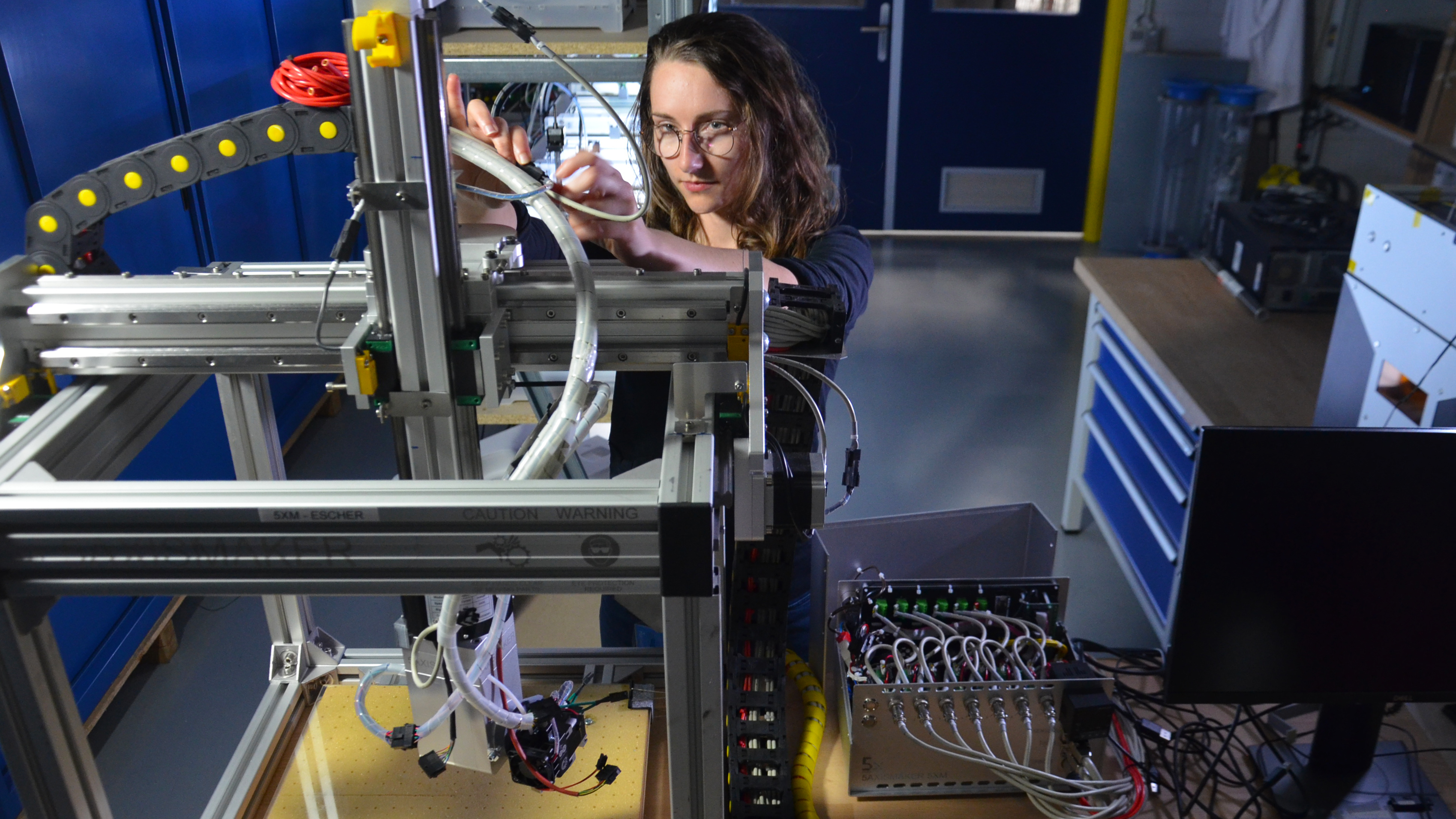Using 3D printing to mimic the mechanical properties and design freedom of biological matter
Materials made by living organisms have remarkable mechanical properties. For example, wood can exhibit stiffness predominantly along one direction, yet it remarkably resists fracture, especially at intricate interfaces such as those with branches. Scientist Caroline Houriet from TU Delft has found an approach to replicate the complex microstructures found in nature using 3D printing techniques. This opens up new possibilities for designing and fabricating lightweight parts with high mechanical performance while also being recyclable. The team present their new insights in Advanced Materials.
Complex bio-inspired patterns can unlock our design space towards more lightweight and adaptable parts, that are really tailored to their exact expected usage. The designer can now integrate some additional features aiming to expand their lifespan without decreasing their performance, for instance by increasing material toughness at one risky spot that tends to break, but still favoring tensile strength everywhere else.
Caroline Houriet
Anisotropy, having different properties in different directions, is a key feature in living organisms: they use it to grow structures in the most effective way possible. Despite advancements in engineering materials, there’s still a significant difference between what can be achieved with them and the intricate patterns found in biological matter. The goal of the team was to bridge this gap by integrating analytical fluid dynamics principles into the generation of the trajectories that the 3D-printer will follow. Through this approach, they aim to establish a new, more efficient, and versatile process for shaping materials. This method expands the scope of study beyond simple or slightly curved lines, encompassing vortices, spiderweb (radial) patterns, hyperbolas, and various combinations thereof. By depositing materials in these unconventional configurations, scientists can observe and exploit intriguing mechanical behaviours.
The approach presented in Advanced Materials uses 3D printing of self-assembling thermotropic liquid crystal polymers (LCPs). Nematic alignment of the polymer results in development of anisotropy at the scale of the print line. By changing the extrusion pressure while extruding the LCPs to print lines, the nematic orientation of the polymer can be influenced. Thus, a remarkably wide range from 3 to 40 GPa (Young’s modulus) can be obtained.
The team also determined a relationship between stiffness, nozzle diameter and line width, making it possible to design materials that have the desired shape and pattern, and the required mechanical properties at the same time. Using this toolpath generation algorithm, lines can be printed with varying widths and curvatures across the entire shape being printed. This manufacturing approach enables the creation of parts with different levels of stiffness and different ways they might break or deform, all from the same type of material.
This approach opens up new design potential for lightweight structures, for example to reinforce weak spots to prevent cracks, or to spatially redistribute stress. Ultimately, this method opens avenues for studying and replicating intricate patterns observed in nature, enabling designers to integrate the patterns for design aesthetics or for functionality, for example to create a chair with stiff legs and a flexible seat, all from the same material.
The code used to generate the patterns, Slith3r, is available open-source and any further developments based on it are very encouraged.

C.C.M.C.A.G. (Caroline) Houriet
C.C.M.C.A.G.Houriet@tudelft.nl

Dr. K. (Kunal) Masania
K.Masania@tudelft.nl
